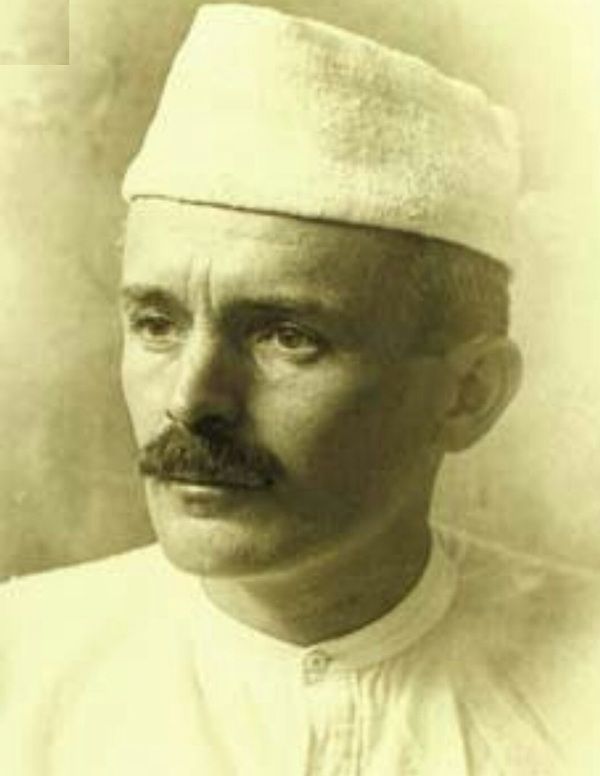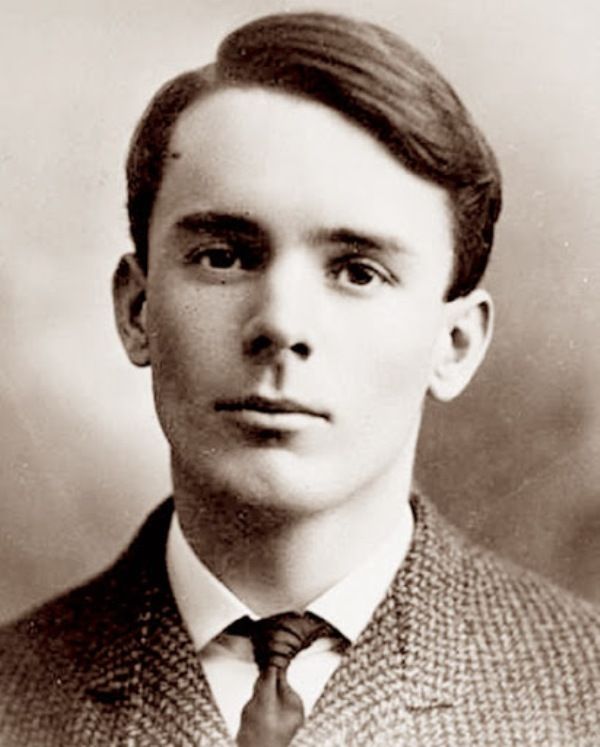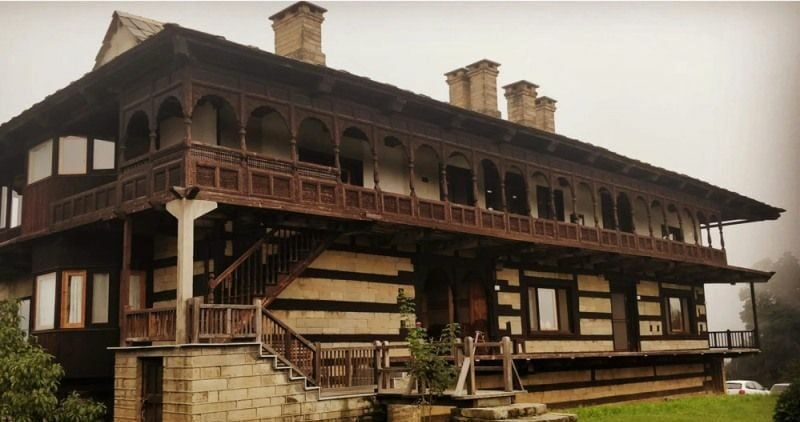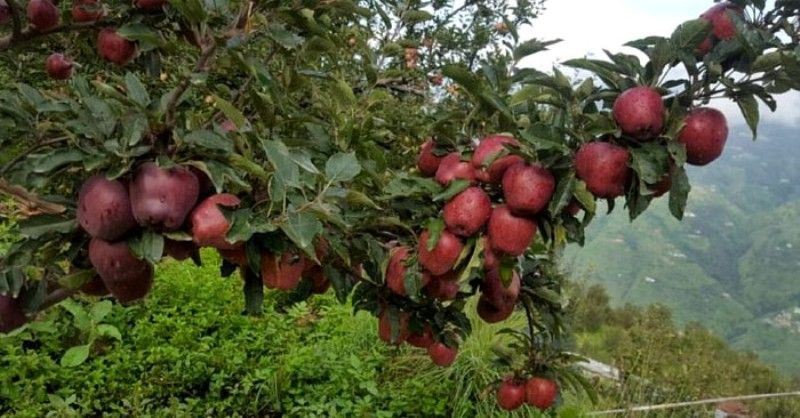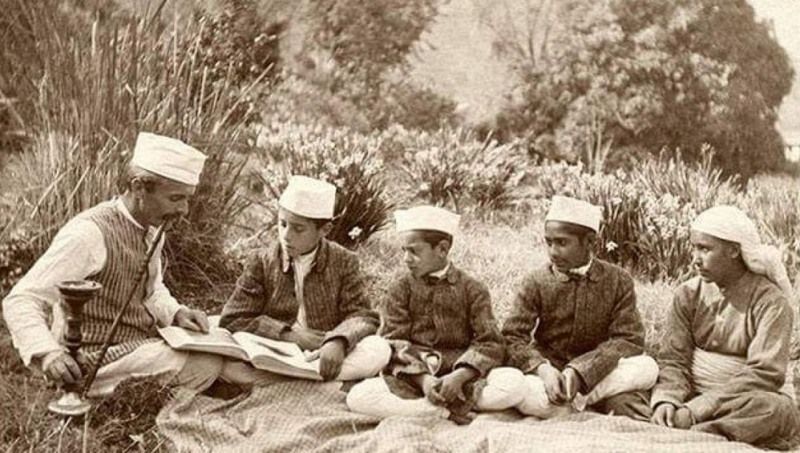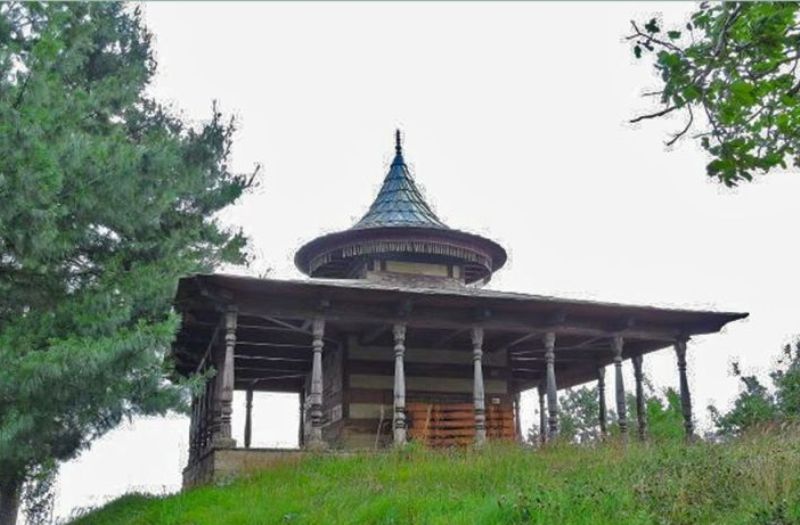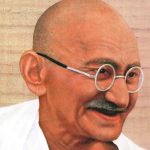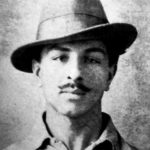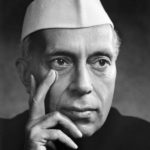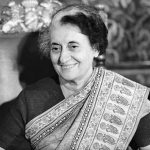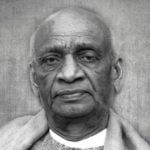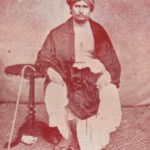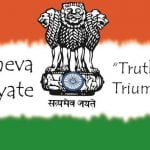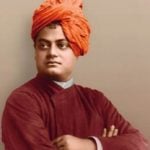Satyananda Stokes Age, Death, Wife, Children, Family, Biography & More
| Bio/Wiki | |
|---|---|
| Real name | Samuel Evans Stokes, Jr. [1]Wayback Machine |
| Profession(s) | • Orchardist • Author • Politician |
| Famous For | Introducing apple cultivation in Himachal Pradesh, India |
| Personal Life | |
| Date of Birth | 16 August 1882 (Wednesday) |
| Birthplace | Philadelphia, Pennsylvania, United States of America |
| Date of Death | 14 May 1946 |
| Place of Death | Kotgarh, Shimla |
| Age (at the time of death) | 63 Years |
| Death Cause | Prolonged illness [2]The Better India |
| Zodiac sign | Leo |
| Nationality | American |
| Religion | • Quaker (Christian (Protestant)); before his arrival in India [3]The Better India • Hinduism (after his arrival in India) [4]The Better India |
| Address | Harmony Hall, on the ridge above Thanedhar, Shimla, Himachal Pradesh |
| Books Written | • ‘Arjun: The life story of an Indian boy’- 6 editions published between 1910 and 1913 in English • ‘National self-realization and essays’ - 3 editions published in 1977 in English • ‘Satyākāmā, or “True desires” (being thoughts on the meaning of life)’- 8 editions published in 1931 in English • ‘The failure of European civilization as a world culture’- 5 editions published in 1921 in English • ‘National self-realization’- 5 editions published in 1921 in English • ‘The love of God: a book of prose and verse’- 6 editions published between 1908 and 1912 in English • ‘To awaking India’- 3 editions published in 1922 in English |
| Relationships & More | |
| Marital Status (at the time of death) | Married |
| Marriage Date | 12 September 1912 |
| Family | |
| Wife | Priyadevi Stokes (Born Agnes Benjamin)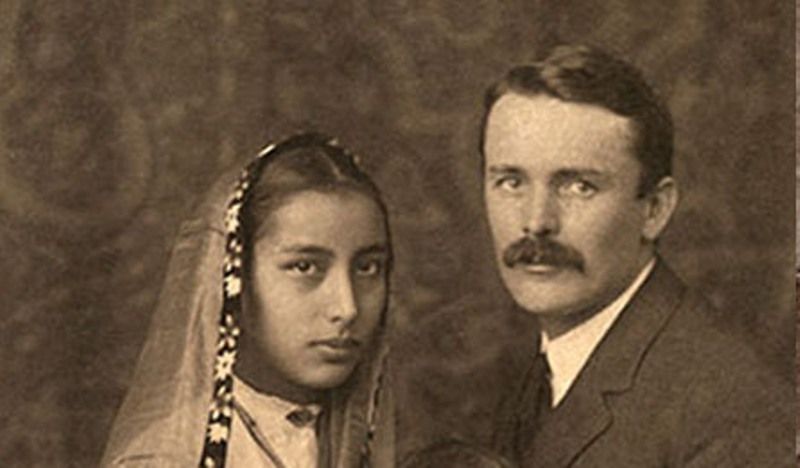 |
| Children | Son(s)- • Pritam Stokes • Lal Chand Stokes • Prem Stokes Daughter(s)- • Satyavati Stokes • Tara Stokes Daughter-in-law- Vidya Stokes [5]Mid Day Note: He had seven children.Names of two children are not known.[6]The Better India |
| Parents | Father- Samuel Evans Stokes Sr. Mother- Florence Spencer |
Some Lesser Known Facts About Satyananda Stokes
- Satyananda was an American Quaker (a historically Christian Protestant society), who settled in India and participated in the Indian Independence Movement. He is remembered for introducing apple cultivation in Himachal Pradesh, India; the state is now widely popular for the export of apples to other Indian states and many countries across the globe.
- Satyananda Stokes belonged to a rich American business family. His father, Samuel Evans Stokes Sr., was well known for the contribution to elevator technology in America. He was an engineer-businessman, who was the founder of Stokes and Parish Machine Company in the USA, which manufactured elevators.
- Samuel was not interested in his father’s business as he did not want to acquire business skills. However, his father made many efforts to convince him to opt for the family business, but Samuel believed to serve mankind, and at the age of 22, Samuel quit his studies at the University of Yale to devote his time to charity works.
- Samuel Evans Stokes came to India in 1905 and arrived at Leper Home Sabathu, Solan, Himachal Pradesh. In the beginning, he was sent to Kangra, Himachal Pradesh for relief work as the town was devastated by a severe earthquake. Soon, he came to Christian Mission House, Kotgarh, Shimla.
- In the beginning, his parents were not happy with Samuel’s decision to go to India, but he was satisfied and happy with his commitment. In 1905, after his arrival in India, he started working for lepers in India, and he earned admiration from the people in India for his selfless service. Lepers in India also needed him and adored his pious work because they wondered why a foreign man was helping the needy and poor people in India. To come close to the Indian culture and develop a close relationship with the people of India, Samuel changed his eating habits as well as clothing.
- The great-granddaughter of Stokes, Asha Sharma, in her biography mentioned her great-grandfather as the worker and helper of leprosy patients who was selflessly concerned about them. She wrote,
An American in Gandhi’s India says, “His parents, of course, were worried that he would get leprosy and never return. But he was determined to go.”
- After his arrival in India, his parents felt that the work Samuel was doing in India was related to his deep inner emotional needs, and they sent him some money from the US. Samuel spent the whole amount on the welfare of lepers and the local villagers, which further enhanced his dignity.
- Young Samuel was self-disciplined, and he never indulged himself in religious purposes. He lived a simple Indian life among the villagers and became a sort of Christian Sannyasi.
- After few years of his arrival in India, the Archbishop of Canterbury visited Viceroy at Shimla where he heard about the lepers’ colony and the work done for their refinement. There, he advised Satyananda to form an order of Franciscan Friars, an order of monkhood pledging to help the poor, diseased, and dying while living in poverty. However, his membership in monkhood lasted only for 2 years.
- Initially, he worked in the plain areas of India including Mumbai, but due to severe climatic conditions in summers, he shifted to the hilly areas of Himachal Pradesh.
- Once, when India was suffering from an acute spread of the plague disease, it inspired Samuel to work selflessly as he saw Pandit Ruliyaram Ji, a sage and a follower of the Vedic religion, serving the helpless plague patients who were abandoned by their relatives in the name of God.
-
Samuel got married to a Rajput girl in 1912 and purchased small farmland near his wife’s village, and he settled in Barubagh, Kotgarh. The father of his wife, Agnes, was a first-generation Christian. Initially, he grew wheat and barley at Barubagh with vegetables like peas, beans, lima beans, pumpkins, potatoes, and cabbages on his farmland. He adopted the lifestyle of a local farmer, and he would often relax in the evening with a ‘hookah.’
- In 1912, Samuel built a house on the ridge above Thanedhar in Shimla and named it ‘Harmony Hall.’ It is a two-story building with sloping roofs made up of slates and wooden beams and big windows with western influence.
- After 4 years of marriage, in 1916, Stokes got the inspiration to grow a new type of apple in the favorable climate and terrain of the Himalayas from the apples grown in Louisiana, USA. He brought them to India and started farming in the farmland he had purchased. It was easy for him to enter the export business in Delhi with his plentiful contacts and earn a good living. Soon, he started motivating his fellow farmers to grow apples as he did and assured them of any help they would need in growing, selling, and exporting the apples.
- In 1916, the apples planted by him were Newton Pippins, King of Pippin, and Cox’s Orange Pippin, but unfortunately, these English varieties of apples were not undertaken for cultivation by the local Indian farmers because they were sour in taste.
- The unfair rule of the British was self-evident and clear to him while he was living in India, and he took a stand against it. Stokes, in the late ‘20s, battled against the British rule, and he particularly opposed ‘Impressed labor’- where men were forced to join the British Army. To restore the dignity of local Himachal people, he challenged the British government through many notices, to not force them into labor. His letters mentioned the laborers as ‘us’ rather than ‘them,’ making him a true Indian.
- Samuel was inspired by the teachings of Mahatma Gandhi during the Indian Independence Movement and adopted to wear Khadi only. He was very sensitive about India’s political changes and participated in its freedom struggle.
- The Jallianwala Bagh massacre in April 1919 in which the British cops shot about one thousand innocent people of Punjab shook the soul of Stokes, and it prompted him to join politics. He had the thought that politics was one of the most significant ways to raise a voice against the cruelty of the Britishers. Consequently, he joined the Indian National Congress in 1921. He held a unique position in the party for being the only American member of the All India Congress. Stokes represented Kotgarh at the Nagpur session of the All India Congress Committee in 1921.
- In 1921, Mr. Stokes, as a leader of the Indian National Congress, along with other Congress leaders opposed the visit of the Prince of Wales, Edward VIII, to India. Consequently, he was arrested by the British government under the charges of sedition at Wagah. Stokes, along with Lala Lajpat Rai, represented the Indian National Congress in Punjab in 1921.
- On his arrest, in 1921, Mahatma Gandhi said,
That he should feel with and like an Indian, share his sorrows, and throw himself into the struggle, has proved too much for the government. To leave him free to criticize the government was intolerable, so his white skin has proved no protection for him…”
- Elsewhere, Mahatma Gandhi mentioned Satyananda Stokes-
As long as we have an Andrews, a Stokes, a Pearson in our midst, so long it will be ungentlemanly on our part to wish every Englishman out of India. Non-cooperators worship Andrews, honor Stokes.”
- In 1924, Stokes started a school, Tara High School, in memory of his son who died at the age of 8, where he used to teach the local poor children of villagers. The subjects he taught were Hindi, English, Religion, Horticulture, and self-defense. The main focus of the school was to educate girls.
- While fighting for the Independence of India, he was also struggling in his personal life. One of his 7 children died at the age of 8. Unable to deal with the loss, he decided to take refuge in religion. In 1932, under the guidance of Arya Samaj, Samuel adopted the Hindu religion and changed his name from Samuel Evans to Satyananda Stokes. His wife, Agnes, respected the decision of her husband and changed her name to Priyadevi. Some sadhus who were on their way to Kailash Mansarovar yatra inspired him to read Bhagavad Gita and Upanishads in English, and later on, he learned the Sanskrit language.
- In 1937, Satyananda built a temple popularly known as ‘Paramjyoti Mandir or the Temple of Eternal Light’ near to his home ‘Harmony Hall.’ It is a pent roofed style temple that has ‘Havan Kund’ and is inspired by the teachings of Bhagavad Gita and Upanishads. A veteran Indian Business Tycoon, Kishore Birla, financially supported Stokes with an amount of Rs 25,000, to motivate him to build this temple.
- Mahatma Gandhi acknowledged the exceptional work of Satyananda Stokes in a weekly paper of ‘Young India’ by publishing it on the front page titled “Reward of Adoption.”Gandhi said to Stokes,
In spite of our intellectual difference, our hearts have always been and will be one”
- The Dalia Lama, the Spiritual Leader, delightfully sums up Stokes’s philosophy of life-
The true expression of nonviolence is compassion. Some people seem to think that compassion is just a passive emotional response instead of a rational stimulus to action. But to experience genuine compassion is to develop a feeling of closeness to others combined with a sense of responsibility for their welfare.”
- Many people have not heard of Satyananda Stokes even though he has a unique history in India’s struggle for freedom. However, he is still remembered by the people of Himachal as the inventor of apple farming, but his struggle for the freedom of India is not widely known. He was an idealist, rebel, visionary, social reformer, and political worker.
- Satyananda Stokes died on May 14, 1946. He dedicated his entire life selflessly to the economic and social upliftment of the people of Kotgarh, Shimla.
References/Sources:

